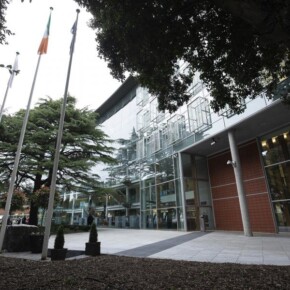Church Street tragedy remembered
Dublin People 07 Sep 2013
THE worst single tragedy that occurred during the 1913 Dublin Lockout was marked at a moving ceremony at Glasnevin Cemetery last week.
Seven people died when a tenement house on Church Street collapsed on September 2 that year, just 48 hours after Bloody Sunday when police baton charged crowds protesting at the arrest of Jim Larkin on O’Connell Street.
Margret O’Rourke (53), Eugene Salmon (17), Elizabeth Salmon (8), Peter Cowley (6), Eliza Fagan (43), Nicholas Fitzpatrick (50) and John Sheils (3) are all now resting in graves at Glasnevin.
Last week Lord Mayor of Dublin, Oisin Quinn, who led the tributes to those who died in the tragedy, described the event as
“the starkest and most tragic event
? that followed Bloody Sunday.
“The death toll would have been much greater if it had happened at night, when nearly 100 people would have been present in the buildings,
? he said.
“It would also have been much greater if the Capuchin Friars, who still do wonderful work in the community, had not organised a children’s party that afternoon.
“The deaths of Eugene and Elizabeth Salmon were particularly tragic. Eugene had been locked out at Jacob’s Biscuit factory and ran into the crumbling tenement in an unsuccessful attempt to save his sister.
?
Glasnevin Cemetery historian, Shane McThomais, said that despite public outcry over the tragedy it would be another half century before Dublin eradicated the
“dreadful tenements.
?
“The Church Street disaster was one of the worst housing incidents of the time, and it prompted Dublin City Council to build places like Cabra and Finglas and clear Dublin of its deadly tenements,
? he said.
Last week’s ceremony was organised by ICTU and Glasnevin Trust. ICTU’s Sally Anne Kinahan said there was a direct link to the city’s appalling housing conditions and the low wage economy of the time.
“Unskilled workers, who made up over a quarter of the adult male population, could no more afford decent housing than adequate food and clothing for their families,
? she said.
“The high infant mortality rates in particular, from preventable diseases, can be traced directly to the filthy, insanitary conditions in which at least 20,000 families were consigned to live.
“The fight by Jim Larkin and the Irish Transport and General Workers Union for the right to collective bargaining was a strategy of self-help to secure a greater share of the fruits of their labour.
“The issue is as alive today as it was then. Once more we are seeing those in vulnerable, low paid occupations being locked out of decent employment and, consequently, a decent life for their families and themselves.
?
Dr Mary McAuliffe of UCD and the Smithfield and Stoneybatter People’s History Project said that public outcry after the disaster focused attention on the dire living conditions of Dublin’s working class.
“It resulted in a British government inquiry into housing conditions in November of 1913,
? she said.
“As the locked-out workers walked the picket lines, their families lived in some of the most unhygienic, overcrowded, disease ridden tenements in Europe; the fabric of these tenements had been seriously neglected by their landlords, and many stood close to collapse.
“Several inquests into the appalling housing conditions in Dublin had been held prior to 1913, but it took a tragedy to force the issue to the attention of the power that be.
?
Wreaths were laid at the victims’ graves at Glasnevin during last week’s ceremony while Mark Toner, Pipe Major with Dublin Fire Brigade, played a lament at the gravesides.











